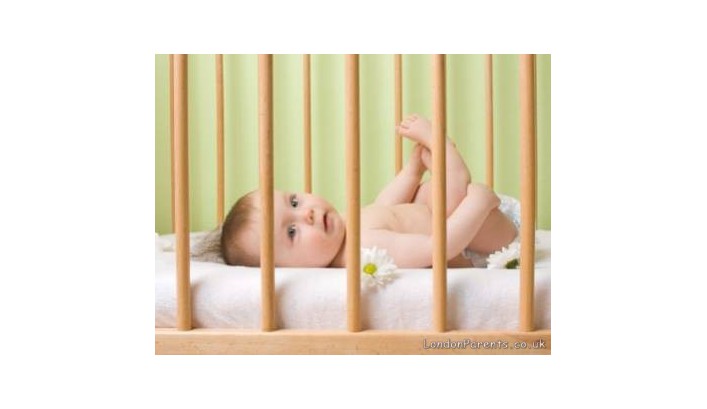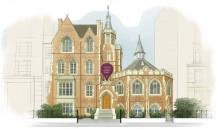-
20 July
-
04 November
-
10 July
-
12 June
-
05 June
-
24 September
-
19 September
-
10 May
-
26 April

Newborn babies can sleep in a cot straight away, but most parents prefer to wait until their baby is around four to six months old before moving them into a cot. While there ís a lot to be said for getting organised before the baby is born, but a cot is one purchase that you could leave until things have settled down after the birth.
You can expect your baby to sleep in a cot until he’s at least 18 months old, and up to when he’s 3 years old, depending on his size and his adventurous nature – once a toddler starts to try and climb out of a cot, he’s outgrown it.
Should I start with a Moses basket?
As you would expect, these baskets consist of a woven rush construction with side handles and a padded interior, often on an adjustable stand. It is usually kept next to mum’s bedside for convenient night time feeds and close bonding.
A Moses basket is convenient in the first few weeks because it’s portable, doesn’t take up too much space and offers a safe, cosy environment for your newborn. But as your baby grows (and this happens in a matter of weeks) it will become redundant.
What about a crib?
A crib will last months, rather than weeks, although still not as long as a regular cot. But your baby is sure to find the rocking motion comforting and, as with a Moses basket, she’ll feel lovely and snug inside.
Most parents look for a basic cot which will last baby from birth to about 3 years old. When choosing a cot there are essential “must have” features which are found on all cots. The main additional features concern the mattress type and the ability to convert the cot into a toddler bed. The majority of cots are made from wood, painted in a baby safe paint/varnish.
Key points to consider when buying a cot
- The size of the cot, taking into account your baby’s size, growth and how long you hope to use it. Also think about the size of the room where the cot is going and where you plan to put it in the room
- What sort of mattress to buy. Your chosen cot is unlikely to have a mattress included in the price, although several cot manufacturers also make mattresses and may recommend that you buy their brand
- Will it co-ordinate? Some cot manufacturers also make matching nursery furniture and you may want to choose a co-ordinating range
- How soon do you need it? Allow for shop delivery times as your chosen cot may be out of stock
- Drop sides – one or both of the cot sides drop for you to put down and pick up your baby more easily
- One or two handed drop – check whether you need one or two hands to operate the mechanism that drops the side; go for one handed designs if you can, because you will invariably have the baby in your other arm
- Teething rails – once he can stand, your baby may try out his new teeth on the top of the cot. Plastic strips along the wooden edge will protect your baby from getting a mouthful of splinters, and the cot from being damaged
- Mattress base height – look for adjustable levels, usually two or three, where the mattress sits in the cot. You start with the mattress at the top for easy access and then lower it as your baby grows, finishing on the lowest height when your baby is sitting up or standing
- Castors – some cots are sold with castors which make it easier to move around for cleaning. If the cot does have castors ensure they are lockable, otherwise an energetic baby might make the cot move around
- Play features – something like wooden playbeads set into the cot ends will make it attractive to look at and fun for your baby, but these aren’t essential as you can easily attach toys to the cot
These notes on baby sleeping are based on a Department of Health publication.
From birth, place your baby on its’ back to sleep; this has been found to be the safest position. Note that as babies grow they may start to roll onto their sides. This should not be prevented but you should gently turn your baby onto its back at convenient times.
Babies are sensitive to overheating and have little control over their temperature. At a comfortable room temperature of 18 degrees Centigrade Baby will only need 2 unfolded blankets with a sheet and a nappy, plus vest/babygro. At 20 degrees Centigrade only 1 blanket is needed.
Babies lose excess heat from their heads so it is vital that their heads cannot become covered during the night. The “feet to foot” position should be used which prevents baby from wriggling down under the covers. With Baby’s feet in contact with the foot of the cot the covers should reach no higher than baby’s shoulders. These covers should be securely tucked in so that they cannot slip over baby’s head. Never use hot water bottles or other artificial in-cot heating. Position the cot away from radiators and other heaters and avoid direct sunshine.
Co-sleeping has an appeal to some but it is considered by many to be a very dangerous practice. It’s always safest to put baby back in the cot before you go to sleep especially if you are very tired, have had that little extra G&T or are likely to sleep soundly. This also applies to sleeping on the sofa with baby; the risks are similar.
Do you have more points to consider about cots? Please share below!
Related articles
EPIC GLOBAL PRESCHOOL, ODYSSEY, COMING T...
Londonnews554XXXAn award-winning preschool offering from Asia is to open its first campus in London, bringing a new global ‘limitless learning’...
Read moreParenting is no easy task, and for Jordan and Briana Driskell, raising their quintuplets—Zoey, Dakota, Hollyn, Asher, and Gavin&mdash...
Read moreFocus on back to school - include a free...
Emma WallaceThe summer holidays are drawing to a close and September sees pupils heading back to the classroom. Alongside buying new uniform and statio...
Read more0 comments
No messages yet




